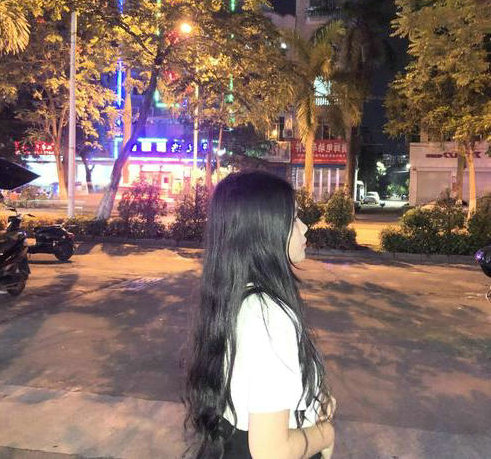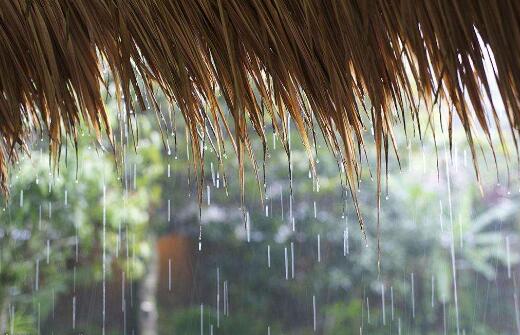
广东省博物馆导游词(中英)
广东省博物馆于1957年开始筹建,1959年10月1日,广东省博物馆及其所辖的广州鲁迅纪念馆正式对外开放。
旧馆馆址在广州市文明路215号中山大学旧址(即原广东贡院旧址),占地面积4.3万㎡,除广州鲁迅纪念馆外,还辖有全国重点文物保护单位——国民党“一大”旧址(包括革命广场)和广东省文物保护单位——红楼等。
筹建之初,广东省博物馆陈列大楼设计原是“U”形的建筑物,主楼向东,右为南副楼,左为北副楼,规划建筑总面积1.4万㎡。
南副楼于1959年上半年落成,楼高三层,面积3500平方米。
主楼和北副楼后因经济困难,没有拨款建设。
改革开放后,为适应人民群众日益增长的文化需求,广东省博物馆在原址上建设了新的陈列大楼。
1992年10月新陈列大楼落成,总建筑面积18700㎡,其中新建陈列大楼12300㎡,陈列面积达6000㎡,为原楼1500㎡的4倍。
自成立以来,在党和政府的亲切关怀下,广东省博物馆通过考古发掘、调拨、购买、接受捐赠等方式征集了大量珍贵文物,并在此基础上深入开展学术研究,举办各种形式和题材的陈列展览,努力向社会提供丰富、优质的公共文化服务,在藏品收藏保管与科技保护、陈列展示、科学研究和教育推广等方面,都取得了长足的发展和丰硕的成果,并于2008年5月获评为全国首批“国家一级博物馆”。
截止2009年12月,通过考古发掘、收购、调拨、接收捐赠等方式,广东省博物馆藏品已达16.6万余(套),其中,一级文物404件,二级文物7284件,三级文物12639件,自然标本、化石4万余件(套)。
馆藏中的古字画、古陶瓷两类传世文物,无论数量还是质量,在全国博物馆中,均名列前茅,尤以“岭南画派”书画藏品丰富而闻名;端砚和潮州木雕独成系列,是极具特色的广东传统工艺收藏品;广东出土文物、广彩瓷器、石湾陶塑、广州牙雕、外销画等极富地方特色;自然标本中的“须鲸骨骼”、“巨型孔雀石”和五吨多重的“信宜玉石”等亦极其珍贵。
此外,广东省博物馆还收藏有图书资料10余万册。
十年来,广东省博物馆推出了许多产生过重大社会影响的大型展览,如《广东历史文物展览》、《广东出土文物展览》、《广东省改革开放成就展览》、《商承祚先生捐赠文物精品展览》、《刘少奇光辉业绩展览》等。
目前,馆内的基本陈列有:《广东历史大观》、《漆木精华 ——潮州木雕艺术展览》、《南海海上丝绸之路》、《广东珍稀动物展览》、《鲁迅生平与纪念》、《国民党“一大”与第一次国共合作史料陈列》等。
这些根据广东历史文化特点和馆藏优势推出的展览,反映了岭南文化悠久的历史文化积淀和丰富的自然资源。
此外,每年还不定期地推出一些各具特色的临时展览。
从开馆到现在,累计举办陈列展览300多个,从1985年至2004年近二十年间,平均每年举办8-9个陈列展览。
接待观众数百万人次。
广东省博物馆于1957年开始筹备,馆址定在文明路6号(今215号)中山大学旧址(即旧贡院)。
陈列大楼设计原是“U”形的建筑物,主楼向东,右为南副楼,左为北副楼,建筑面积约14,000平方米。
南副楼于1959年上半年落成,楼高三层,面积3500平方米。
主楼和北副楼后因经济困难,没有拨款完成。
1959年10月1日,广东省博物馆及其管理的广州鲁迅纪念馆对外开放。
改革开放以后,为适应人民群众日益增长的文化需求,广东省博物馆决定在原址上建设新的陈列大楼。
1992年10月新陈列大楼落成,总建筑面积18700平方米,其中新建大楼12300平方米,陈列面积达6000平方米,为原楼1500多平方米的4倍。
Guangdong Provincial Museum began construction in 1957, October 1, 1959, Guangdong Province Museum and under the jurisdiction of the Guangzhou Lu Xun Memorial Hall opens. The old museum is located in Guangzhou city of civilization Road No. 215 Zhongshan University ( former Guangdong site the site), covers an area of 43000 square meters, in addition to the Guangzhou Lu Xun memorial hall, also have jurisdiction over the national key cultural relics protection units -- the a site ( including the revolution Square ) and Guangdong Province paper relics protection unit -- red etc..At the beginning of the establishment, Guangdong Province museum building design is U shaped buildings, the main building to the East, south side, right, left for the north side building, planning a total construction area of 14000 square meters. The south side building in the first half of 1959 was completed, a three-storey building, area 3500 square meters. The main building and the north side building, due to economic difficulties, no funding construction.After the reform and opening up, in order to meet the growing cultural needs of the people, Guangdong Province Museum on the site of the construction of the new building displays. In 1992 October the new exhibition building was inaugurated, a total construction area of 18700 square meters, of which 12300 square meters of new building displays, display area of 6000 square meters, for the original building 1500㎡4 times.Since its inception, the party and the government under the loving care of Guangdong Province, the museum through archaeological excavation, transfer, purchase, donations and collected a large number of precious cultural relics, and on the basis of in-depth research, holding various forms and themes of the exhibition, and strive to provide rich, high-quality public cultural service in the collection, storage, display and technological protection, scientific research and education etc, have made great strides in the development and fruitful results, and in 2008 May was named the first batch of national museum .As of 2009 December, through archaeological excavation, acquisition, transfer, donations and other means, Guangdong Province Museum has reached more than 16.6 ( sets), in which, a class of 404 cultural relics of 7284 cultural relics, level two, level three of 12639 cultural relics, natural specimens, fossils of more than 4 pieces ( sets). The collection of ancient calligraphy, ancient ceramics two handed artifacts, both quantity and quality, in the National Museum, have come out in front, especially in the south of the Five Ridges school of painting and calligraphy collection rich and famous; Duan and Chaozhou wood into a single series, is very characteristics of Guangdong traditional crafts collections; Guangdong unearthed cultural relics, the color of porcelain, Shiwan Guangzhou ivory carving, pottery, exporting paintings highly local characteristics; natural specimens in whale bones , giant Malachite and five tons of multiple Xinyi jade is also the extremely precious. In addition, Guangdong Province, the museum also has a collection of books of more than 10 books.In ten years, Guangdong Province Museum launched many had great social impact of large-scale exhibition, such as the Guangdong historical relics exhibition , Guangdong unearthed cultural relics exhibition , Guangdong Province reform and opening achievement exhibition , Mr. Shang Chengzuo , donated cultural relics exhibition Liu Shaoji glorious achievements exhibition etc.. At present, the basic display: history , Guangdong grand paint wooden essence -- Chaozhou wood carving art exhibition , the South Silk Road on the sea , rare animal Guangdong exhibition, Lu Xun's life and honor , the a and the first cooperation between the KMT and the historical exhibition etc.. According to the historical and cultural characteristics of the Guangdong and its collection launched the exhibition, reflect the culture of South of the Five Ridges has a long history of cultural heritage and rich natural resources. In addition, also do not regularly introduced some distinctive temporary exhibitions. From the opening to the present, accumulative total hold exhibitions more than 300, from 1985 to 2004, nearly twenty years, the average annual 8-9 exhibition. Millions of people to receive the audience.Guangdong Provincial Museum in 1957 to begin preparations, is set in the civilized road No. 6 (now 215 ) Zhongshan University site (i.e. old Gongyuan ). Display building design is U shaped buildings, the main building to the East, south side, right, left for the north side buildings, construction area of about 14000 square meters. The south side building in the first half of 1959 was completed, a three-storey building, area 3500 square meters. The main building and the north side building, due to economic difficulties, no funding to complete. In October 1, 1959, Guangdong Provincial Museum and the management of the Lu Xun Memorial Hall in Guangzhou to open to the outside world. After the reform and opening up, in order to meet the growing cultural needs of the people, Guangdong Province museum decided on the site of the construction of new building displays. In 1992 October the new exhibition building was inaugurated, a total construction area of 18700 square meters, of which the new building of 12300 square meters, display area of 6000 square meters, for the original building more than 1500 square meters of 4 times.
写一段引导游客参观鲁迅纪念馆的导游词80字左右
辽沈战役纪念馆坐落在辽西区域性中心城市-----锦州。
锦州地处东北的咽喉要道,依山傍海,是中国历代兵家必争之地。
二十世纪中期,这里曾发生了一场改变中国前途和命运的著名战役------辽沈战役。
辽沈战役是东北解放军于1948年9月12日至11月2日在南至辽宁西部、北至沈阳、长春等地的千里战线上,同国民党军展开战略决战,国共双方共投入兵力150万之众。
整个战役经历了攻克锦州,解放长春;辽西会战,歼灭廖耀湘兵团;解放沈阳,营口三个阶段。
历时52个日日夜夜(140天),共歼灭敌人47万余人,解放了东北全境,为加速全国解放战争的胜利进程做出了巨大贡献。
对此,开国领袖评论说:“辽沈战役的胜利使中国的军事形势进入了一个新的转折点,这是中国革命成功已经迫近的标志”。
辽沈战役纪念馆始建于1959年。
1988年10月辽沈战役胜利40周年之际,新馆落成开放,叶剑英元帅亲笔题写了“辽沈战役纪念馆”的馆名。
2002年11月由国家、省、市投资6000万元对纪念馆又进行整修和扩建,权力打造“红色基地”,未成年人教育基地和军事文化主题的旅游景区,2004年11月重新对外开放,改造后的园区由原来的11万平方米,扩展到18万平方米。
我们从云飞街向北过铁路双桥洞,就可看到一组具有现代气息的三个巨石方块建筑组成的建筑群,这就是中国的“凯旋门”-------辽沈战役纪念馆的胜利之门。
胜利之门是由三个单体建筑组成,占地东西长77米,南北宽42米,前面两个单体建筑,东面高11米,西面高9米,北面单体建筑最高16米,三个单体建筑面积2400平方米。
前面两个单体建筑都有一个斜度,从远处看是一个英文字母“V”,是胜利的象征,同时又像张开的手臂,敞开胸襟迎接来自国内外的游客。
三块巨石形状既有门的功能,又有城市雕塑的强烈视觉效果,还兼有建筑物的功能,该工程是由辽宁省建筑设计院设计而成的,设计人员引用和借鉴了中国古代皇宫和皇陵的设计理念,从南到北,从低到高,以纪念馆建筑主体和纪念塔为中轴线,使游客在进入景区的时候有一种纵深感,对纪念塔产生了一种崇敬和高尚的思想感受,造成波澜起伏之情。
穿过胜利之门,大家就可踏上了纪念馆园区的胜利之路,园区的地面是采用花岗岩铺设象征人民军队是从大山内长出的石头,坚硬,勇敢。
而从南大门到纪念塔一共经历104个台阶,则意味着辽沈战役经历了104天。
经过了胜利之路,我们来到了提升广场,提升广场把位于中轴线上的南园和北园完整地结合为一个整体,起到了引线穿珠的特殊作用(立交平台长600米)。
提升广场中间地面采用玻璃钢制透明地面,上雕刻着国旗上的5颗五角星,游人在上面可透视广场下面的马路,两侧的玻璃墙壁上刻着10枚奖章,一侧为解放勋章、解放奖章、奖章、艰苦奋斗奖章、模范奖章,另一侧为全国工农兵劳动模范代表会议纪念章、解放东北纪念章、朱德奖章、英雄奖章、勇敢奖章。
烈士名录墙座落在辽沈战役纪念塔南面两侧。
主体由花岗岩方石砌成,碑面镶贴黑色磨光花岗岩板,烈士碑廊高为2.5米,长为258.99米。
分首碑、主体碑、尾碑三部分。
主体碑铭刻在东北解放战争中牺牲的烈士英名。
按《东北解放战争烈士名录》共有5万多名,去掉当年牺牲重名的烈士,实刻47100多位。
名录为魏碑体。
名字总体按1945、1946、1947、1948、年和姓氏比划顺序排列,外国籍和女同志有标注。
尾碑为彭真和伍修权的亲笔题词。
“后记”为捐资单位名称及捐款数额 辽沈战役纪念塔是纪念馆园区中心建筑物,1957年2月落成。
塔身高8米,为花岗岩砌筑;塔顶是一座持枪振臂呐喊的青铜铸就的战士全身塑像,高6米,重18吨。
塔身正面镶嵌着朱德题写的“辽沈战役革命烈士永垂不朽”12个鎏金大字。
塔身两侧是长8.8米、高2.4米的花岗岩高浮雕群像,表现塔山阻击战和黑山阻击战的战斗场面。
塔座91.5平方米。
塔后4.2米处立有一方纪念碑即辽沈战役革命烈士纪念碑,高2.3米、宽5.2米,灰白色大理石上镌刻着辽宁省第一届人民代表大会通过的辽沈战役革命烈士纪念碑文。
朱瑞将军雕像建于1991年11月2日,座落在辽沈战役纪念塔西侧60米处,占地面积95平方米。
由鲁迅美术学院贺中令教授设计。
通体由花岗岩建造,长8.4米、高3.6米、宽2.1米。
炮车式的纪念碑正面镶嵌着2.4米高的朱瑞将军高浮雕头像.头像下方镌刻着伍修权同志题写的“朱瑞将军”四个金字。
碑体背面铭刻着朱瑞将军的生平简介。
朱瑞将军是东北人民解放军炮兵司令员,1984年在辽沈战役攻打义县战斗中牺牲,是我军在解放战争时期牺牲的最高将领。
三层踏步的石台阶基座,将炮车碑托起,雄伟地象征着将军指挥人民解放军炮兵部队压倒敌人的气势。
将军头像背景大面积窟窿凿痕,内涵将军殉职的意蕴。
在辽沈战役纪念塔东侧60米处有两座相并列的陵墓,在西侧的是梁士英墓、在东侧的是张士毅墓。
梁士英、张士毅是在辽沈战役中牺牲的两位著名烈士。
两位烈士墓的建筑形式完全相同,为花岗岩结构,长3.2米、宽2.4米、高0.7米。
北立墓碑,记述烈士生平及贡献。
墓地呈扇形,周围环以苍松。
梁士英墓为衣冠冢,张士毅墓为尸骨墓 馆藏文物11000多件,包括彭真的公文包和陈云的棉背心等国家文物23件。
其中,再现“攻克锦州”宏大战争场面的全景画馆为中国第一座全景画馆,被誉为中国博物馆和美术史上的“开山之作”。
2001年世界全景画中国年会期间,外国专家专程来锦考察,并称赞辽沈战役纪念馆的全景画是世界一流水平。
新馆开馆15年来共接待中外游客1000多万人次,先后被命名为“全国青少年教育基地”、“全国中小学生爱国主义教育基地”、“全国百家爱国主义教育示范基地”、“全国爱国主义教育基地”等称号和国家AAA级旅游景区。
全景画面长122.22米,高16.1米,总面积1968平方米,重量达4吨。
摘抄厦门导游词
鲁迅纪念馆复原了鲁迅当年的居住环境——卧室兼工作室和中山大学校务会议室。
室内陈设非常简朴,床是两条板凳上搁的两块铺板,一顶麻布蚊帐竹竿撑着,床上放的白布枕头和蓝花布面的薄被,十分整洁。
床前,靠近窗户处放着一张七抽屉的书桌。
据说,这种书桌当时只有教授才能使用。
书桌旁边放着一个藤书架,书架上面摆满了线装书。
此外,室内还有四方桌、小茶几和鲁迅亲笔书写了“L.S”(鲁迅二字的英文缩写)字样的藤箱。
这些都是当年的原物。
古城北京还有很多旅游胜地你能不能选一处写一段导游词
阜成门这里有一个鲁迅博物馆



